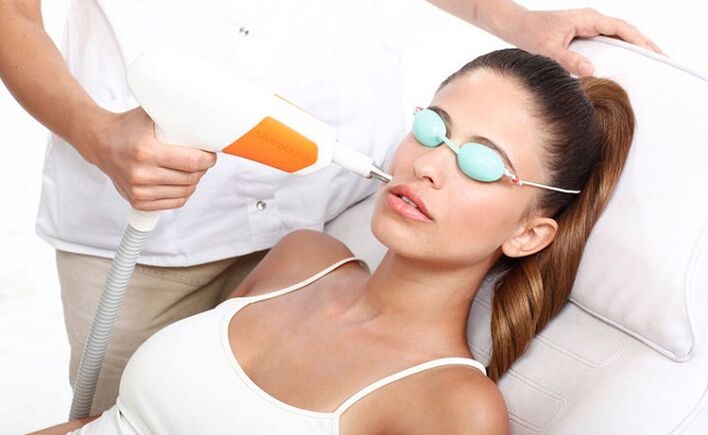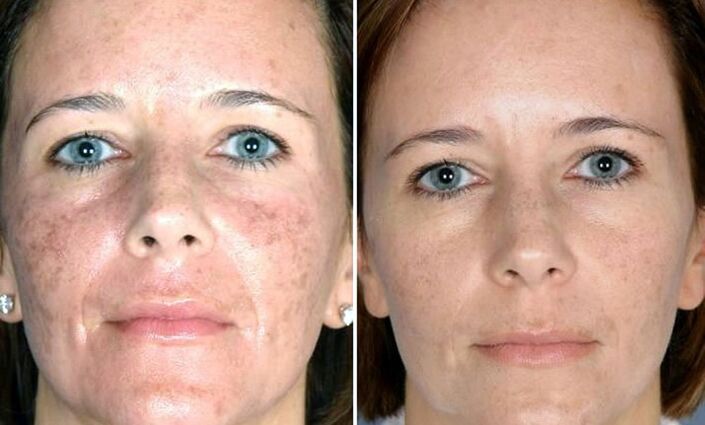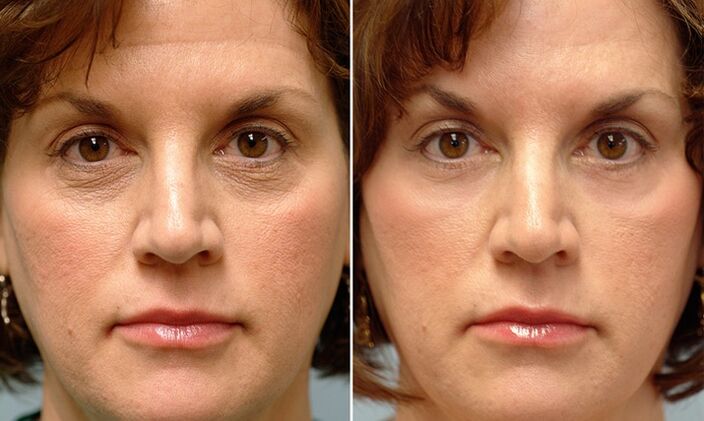From the time of Cleopatra to the present day, there is not a single representative of the beautiful who does not want to prolong the youth and beauty of her skin. Modern medicine does not cease to marvel at the innovations in the field of cosmetology, offering a variety of anti-aging surgeries and procedures.
Particularly popular are techniques that allow you to get rid of the external signs of aging without using a scalpel or Botox injection. Fractional laser rejuvenation is currently practically the fastest and safest way to combat skin aging.

What is a fractional laser and how it "rejuvenates"
When the laser touches the skin, burns occur that spread deep. Active healing (regeneration) processes begin, which provide the desired cosmetic effect. This method is also known in cosmetology as a laser skin surface.
If the same laser is divided into many micropairs, a so-called fractionated laser beam is obtained. Such a beam no longer affects the skin as a whole, but a discontinuous microgrid. Burn injuries after fractional laser thermolysis are located in the form of a large number of microtypes between intact skin. This significantly reduces the trauma (and pain) of the procedure and allows the skin to recover faster.
After contact with the laser, intact, healthy skin cells begin to actively divide, forming collagen and elastin, which give the skin elasticity and a youthful appearance.
Types of fractional photothermolysis
Ablative
Laser radiation evaporates water from the tissues to form an "open" microscopic wound surrounded by damaged (burned) cells.
There is a pronounced lifting effect during healing, but there is a risk that the infection will penetrate the deep layers of the skin.
Not ablative
Radiation is used that leaves the epidermis intact so that evaporation from the tissues and the formation of an "open" wound does not occur. Burns form and heal under the epidermis, so there is no risk of infection, but the rejuvenating effect of this procedure is less pronounced.
The beautician individually chooses the method of fractional rejuvenation, depending on the condition and type of skin.
Effects and benefits of fractional laser thermolysis
The main difference between the technique and all other procedures is the optimal balance between safety and effectiveness.
Main pros:
- the ability to affect any part of the body (including décolletage, neck, eyelids);
- a wide range of indications;
- physiology (the area of damage is only 20% of the total area treated with the laser);
- short healing period (2-7 days);
- anesthesia method - application;
- the possibility of using dark-skinned persons (as it does not cause hyperpigmentation);
- the duration of the result (from one year to several years).
The downside is that not all aspects of the effect of a fractional laser are known enough, as the technology itself has emerged recently.
Indications for fractional rejuvenation:
- wrinkles (at any depth and location);
- decrease in the elastic properties of the skin;
- enlarged pores;
- pigmentation;
- acne;
- spider veins;
- scars (postoperative, remnants after acne);
- striae, including the skin of the mammary glands.
Characteristics of performing fractional laser thermolysis
A few days before the photothermolysis, the cosmetologist may prescribe (if necessary) antibacterial or antiviral drugs in pre-doses.
On the day of fractional rejuvenation, physical activity, smoking and alcohol consumption should be completely ruled out.
Before the procedure, the skin is thoroughly cleansed and treated with a special anesthetic cream. In some cases, anesthesia is not required at all.
The effect of the laser can be felt as "tingling" or "tingling". The duration of the procedure (from a few minutes to an hour) and their number are chosen individually. After the laser treatment, a soothing nourishing cream is applied to the skin.
Follow-up skin care:
- Hydrate the skin with a special cream 2-3 times a day (within 2 weeks);
- Protect your skin from UV radiation for 2 months (do not visit the solarium, use sunscreen with a protection factor of at least 30);
- do not use exfoliation and scrub (within 2 weeks);
- do not use cosmetics containing salicylic acid and retinol (within 2 weeks);
- do not wear compression underwear for several days (if fractional photothermolysis has been performed on the body);
- limit (exclude) smoking and alcohol throughout treatment (reduce skin regenerative functions).

The rehabilitation period lasts on average up to 3 days after non-ablative fractional laser thermolysis and up to 7 days after ablative thermolysis.
The skin changes after the procedure
Redness, discomfort, and mild swelling may persist for 1-3 days after intense laser exposure. If this condition is subjectively poorly tolerated, the use of analgesics and skin cooling is permitted.

After a few days, a bronze skin color (tanning effect) may appear, lasting up to 2 weeks and disappearing on its own. Dryness and exfoliation of the skin are observed within 5-7 days after fractional rejuvenation.
Undesirable consequences and contraindications of photothermolysis
Improper skin care after the procedure, non-compliance with recommendations or technical errors during laser treatment can lead to the following complications:
- Redness lasting more than 3 days;
- edema at the site of exposure lasting more than 2 days;
- worsening of herpes infection (if previously in the treatment area);
- infection (appearance of streptoderma);
- erosion, burns in the affected area;
- accurate bleeding;
- hyperpigmentation.
To avoid undesirable consequences, the fractional laser rejuvenation procedure is performed after the examination and exclusion of possible contraindications.
Absolute contraindications:
- pregnancy and lactation;
- tendency to form keloid scars;
- acute infectious process (including herpes);
- oncological pathology;
- post-radiation condition, chemotherapy;
- epilepsy;
- significant disorders of the immune system;
- taking medicines containing retinoids;
- during exacerbation of psoriasis (atopic dermatitis).
Relative:
- renal pathology;
- diabetes;
- inflammation at the site of exposure;
- the patient refuses to follow the beautician's recommendations;
- mental illness;
- allergy to anesthetic;
- autoimmune disease;
- fresh tanning (visit to the solarium in the last month);
- recent rejuvenation procedures (affecting the deep layers of the skin - in the last three months, superficially - within 10 days).
Reviews of fractional laser rejuvenation and patient photos from the "before" and "after" series generally undermine the effectiveness and low trauma of this method of preserving youth.

Remember!The procedure should only be performed by qualified professionals (surgeons or dermatovenerologists) who are licensed to work with laser devices. Doctor's expertise is the key to your beauty!















































































